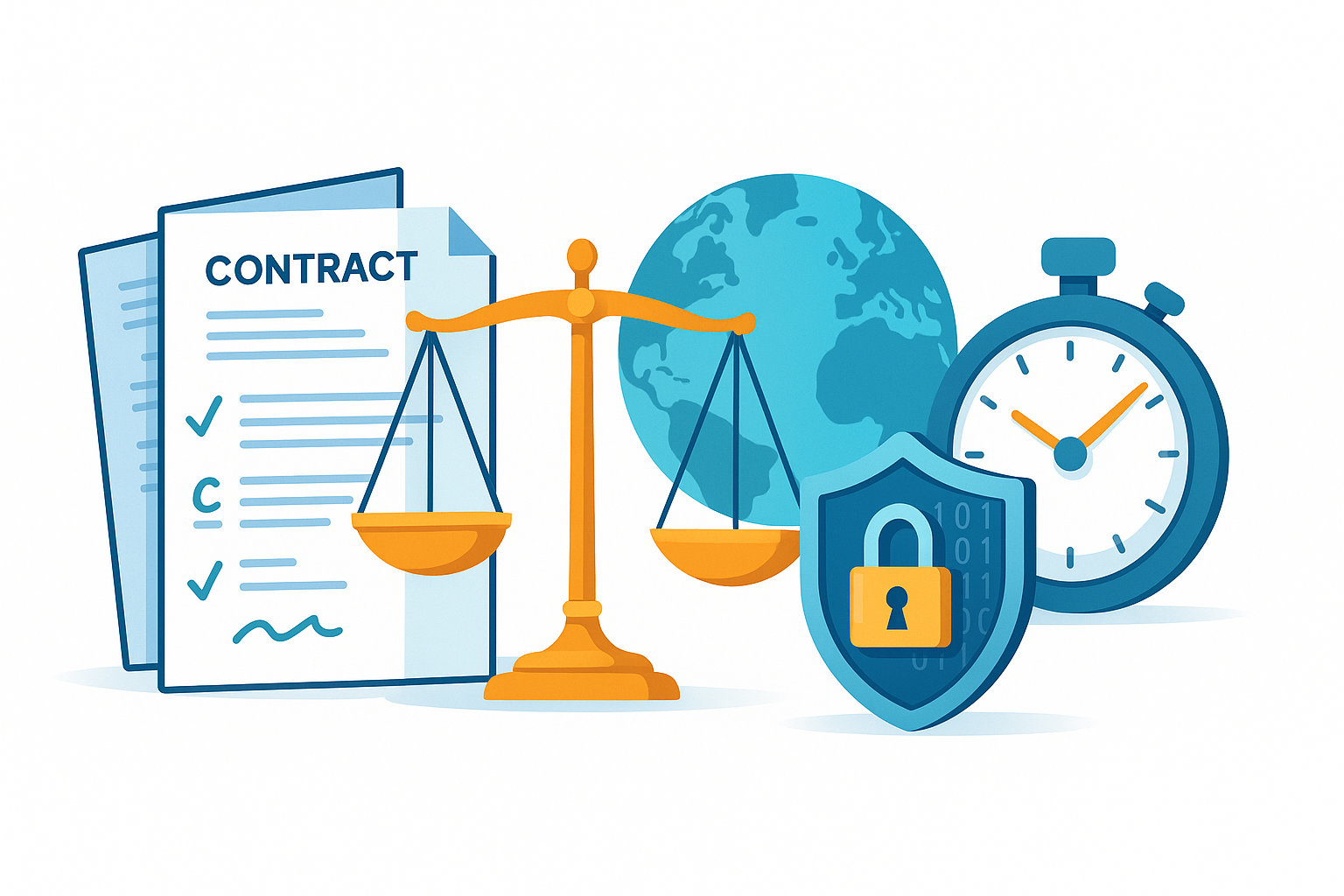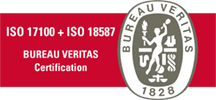The translation company legal teams trust for risk-proof multilingual content
Translation company for legal documents: how to reduce risk and speed up delivery.
A translation company helps legal teams move fast without adding risk. This guide shows how to select, brief, and measure the right partner for complex cases.

Table of Contents
Why legal teams need a translation company, not a one-off vendor
High-stakes matters require repeatable processes and clear accountability. A seasoned translation company provides project management, specialist linguists, and audited QA—capabilities that ad-hoc freelancers can’t maintain at scale. For multi-jurisdiction cases or rolling discovery, you need a team that stays aligned with your glossaries, clause libraries, and preferred style.
Look for evidence of domain depth. Legal content spans contracts, pleadings, IP, HR policies, compliance notices, and technical exhibits. An experienced team will route patent specs to engineering-savvy linguists and assign privacy specialists to data-processing agreements. See how we scope work across specialties in our translation services and dedicated legal translation practice.
Shortlist a translation company with verifiable standards
Before you trust sensitive materials to any translation company, verify formal standards and continuous improvement. ISO 17100 defines the translation process and reviewer requirements; ISO 27001 covers information-security management—both signal mature operations suitable for legal work. Review the provider’s training regime and zero-defect commitments. For reference, explore our ongoing training program and zero-errors commitment. Also confirm the breadth of services—from certified translations for court or immigration to technical translation for expert reports.
A strong translation company will document reviewer roles, terminology management, and corrective actions. Ask for sample redacted QA reports and how feedback loops improve outcomes across matters. Continuous learning should be visible, not aspirational; see our approach to continuous improvement.
What a translation company must prove before onboarding
Start with a data-handling map: where files live, how long they persist, and who can access them. Require NDAs with all linguists and tech vendors. Ask how the provider separates environments for testing vs. production and how they audit access. A credible translation company will show encrypted transfer, role-based permissions, and breach escalation paths.
Quality signals include dual-linguist review for critical filings, court-style formatting, and country-specific conventions (date, numbering, exhibits). For notarial or sworn needs, confirm jurisdictional validity; certified output should include translator credentials and statement of accuracy. Mature providers will also propose throughput plans for eDiscovery surges, combining human translation for key sets with machine-assisted triage under human supervision—never as a shortcut for final court submissions.
Secure workflows for evidence, contracts, and filings
Evidence packets often mix PDFs, scans, spreadsheets, and multimedia. Your translation company should normalize formats, preserve Bates numbering, and maintain an audit trail from intake to delivery. Insist on version control so revised clauses don’t drift across languages.
Security isn’t just storage—it’s process. Verify alignment with international standards such as ISO 17100 for translation quality and ISO 27001 for information security. For signatures and timestamps, consider EU eIDAS-aligned processes for qualified electronic signatures; consult the official regulation. A dependable translation company will integrate these controls without slowing delivery.
Pricing, deadlines, and scope control
Transparent quotes protect budgets. Ask for unit rates by service (new words, repetitions, review, DTP), rush multipliers, and minimum fees. A rigorous translation company will surface scope risks early—embedded text in images, complex tables, or jurisdiction-specific stamps—so there are no surprises.
Deadlines hinge on staffed capacity and subject expertise. For urgent closings or injunctions, demand a realistic ramp plan and named reviewers. Providers with proven scale can parallelize safely while preserving consistency through termbases and shared memories. For ongoing programs, see how we maintain velocity across regions in our “we translate the world” overview: We translate the world.
How to brief your provider for reliable outcomes
Good input produces defensible output. Supply source files (not just scans), reference contracts, previous bilinguals, style guides, and definitions of preferred terms. A skilled translation company converts these into a living glossary and project brief. Identify the legal audience (judge, regulator, counterparty) and the risk posture (literal fidelity vs. readable clarity), then lock it in before work starts.
Centralize queries: one channel for questions, one for decisions. Establish redline rules—what requires counsel approval vs. translator discretion. For certified or sworn outputs, specify jurisdiction, formatting (seals, apostilles), and delivery method (digital originals, courier). Your translation company should propose templates so your team spends minutes approving instead of hours explaining.
Measuring quality with legal-grade KPIs
Define quality beyond “sounds correct.” Track error rates by severity (critical/major/minor), on-time delivery %, first-pass acceptance, and the stability of terminology across matters. A professional translation company reports these KPIs monthly and shows corrective actions tied to training.
Audit the partnership quarterly. Review defect trends, throughput during peaks, and satisfaction of in-house counsel. If the translation company shows steady reductions in critical errors and faster turnaround at equal or lower risk, renew; if not, reset expectations or re-bid. Sustainable excellence requires constant iteration, which is why we invest in continuous improvement and structured feedback loops.
FAQ
Q1. Do I need certified or sworn translations for court submissions?
For filings that will be presented to a judge or government body, certified or sworn translations are often required. The exact form depends on jurisdiction: some courts accept a translator’s signed statement of accuracy; others require a sworn translator or a notarized declaration. If documents cross borders, you may also need an apostille under the Hague Convention to validate signatures.
A capable provider will clarify local rules before work begins, prepare the necessary statements, and format the output to court standards (pagination, exhibits, seals). Whenever there is uncertainty, ask the provider to produce a one-page compliance checklist tied to the target court or authority.
Q2. How should we handle privacy and confidentiality for sensitive exhibits?
Begin with a data-minimization approach: share only what’s necessary and redact personal data when possible. Your provider should enforce encrypted transfer, strong access controls, and signed NDAs for every linguist in the chain. Alignment with ISO 27001 indicates a formal security program with risk assessment, incident response, and continuous monitoring.
For EU matters, ensure GDPR-compliant processing, including lawful basis, retention limits, and processor agreements. Ask where data is stored and for how long; require deletion or return on request. For maximum control, use named project teams and restrict subcontracting unless pre-approved.
Q3. Can machine translation be used in legal cases without increasing risk?
Machine translation can accelerate triage—quickly spotting relevant sections in large corpora—but it should not be the final step for filings, contracts, or client-facing documents. The risk is subtle: raw output may misinterpret legal nuance or jurisdiction-specific terminology.
A balanced model uses MT for initial review under strict confidentiality, then routes critical content to human legal linguists for full translation and review. The key is governance: define which content types are MT-eligible, require human post-editing standards, and ensure the system does not retain your data for training.
Q4. What KPIs prove that our translation partnership is working?
Track on-time delivery, first-pass acceptance rate, and error rates segmented by severity and category (terminology, accuracy, formatting). Healthy programs show declining critical errors and stable terminology across matters.
Add business KPIs: cycle time from brief to delivery, cost per thousand words by content type, and variance between quotes and invoices. Quarterly reviews should connect these numbers to concrete actions—training refreshers, glossary updates, or revised templates—so quality trends improve over time.
Image Suggestion (not published)
- Concept: A tidy legal workstation with annotated contracts, a secure laptop, and a subtle globe motif—clean daylight, neutral palette.
- Alt text: Legal team working with a translation company on court-ready documents
- Suggested filename: legal-translation-company-workflow.jpg

